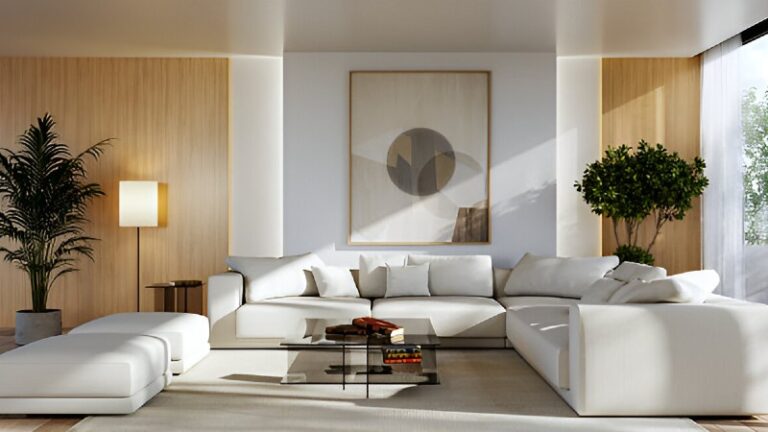Markiseteppe is no longer just about shade or decoration it’s becoming an essential part of hybrid living spaces, where indoor comfort meets outdoor freedom. As modern homes and cities evolve, people increasingly demand flexible, stylish, and sustainable solutions for how they live, work, and relax. Markiseteppe answers this demand by blending traditional fabric innovation with smart technology, eco-friendly materials, and design versatility.
What Is Markiseteppe?
At its core, markiseteppe refers to coverings made from fabrics or advanced textiles designed to provide shade, comfort, and aesthetic value. But in today’s design world, it represents much more:
- A lifestyle enhancer – making spaces more usable year-round.
- A design feature – offering patterns, textures, and colors that elevate interiors and exteriors.
- A sustainability tool – lowering energy use and promoting eco-friendly materials.
Why Hybrid Living Spaces Matter
Hybrid living is a growing trend where spaces are multifunctional, serving as offices, social hubs, and relaxation areas all in one. Balconies, terraces, and even rooftops are no longer optional extras they’re key extensions of our homes.
Markiseteppe makes hybrid living possible by:
- Creating usable outdoor rooms that feel as comfortable as interiors.
- Protecting furniture and equipment in flexible work-from-home setups.
- Controlling climate naturally by filtering light and reducing heat indoors.
Example: A professional working from home in Oslo can use markiseteppe to transform their balcony into an office nook during the day, then a cozy lounge in the evening all without needing to switch spaces indoors.
Key Features of Modern Markiseteppe
- Weather resistance: Designed to withstand rain, UV rays, and mold.
- Sustainability: Increasingly made from recycled or organic textiles.
- Smart technology: Automated systems allow adjustments by smartphone or sensors.
- Versatility: Works equally well for homes, cafes, hotels, and urban rooftops.
Hybrid Design
Residential Applications
- Balcony shading: Privacy and sun protection in apartments.
- Terrace coverings: Turning patios into year-round usable spaces.
- Interior partitions: Using fabric-based dividers to create flexible rooms.
Commercial Applications
- Restaurants and cafes: Outdoor dining areas that adapt to changing weather.
- Hotels and resorts: Poolside coverings with style and comfort.
- Workspaces: Office terraces transformed into relaxation or collaboration zones.
Material Innovation in Markiseteppe
| Fabric Type | Durability | Eco-Friendly | Best Use Case |
| Polyester blends | High | Medium | Urban balconies, offices |
| Canvas | Medium | High | Furniture, rustic patios |
| Eco textiles | Medium | High | Sustainable homes, interiors |
| Water-resistant | High | Medium | Cafes, resorts, poolside areas |
Sustainability and Energy Savings
Markiseteppe directly supports eco-conscious living:
- Energy efficiency: Reduces reliance on air conditioning by blocking heat.
- Sustainable production: Many manufacturers now use organic or recycled fibers.
- Longevity: Durable fabrics reduce waste compared to disposable solutions.
Statistic: According to European design studies, effective shading systems can cut indoor cooling costs by up to 30% during summer months.
Technology Integration
Modern markiseteppe is more than fabric—it’s smart design.
- Automated retractable systems: Adjust shade with a click.
- Weather sensors: Automatically close coverings during rain or strong winds.
- Smart home compatibility: Sync with HVAC and lighting systems for maximum efficiency.
Cultural and Lifestyle Influences
Markiseteppe is not just functional—it carries cultural expression.
- Mediterranean patios: Flowing fabrics that create elegance.
- Scandinavian minimalism: Simple, functional designs for urban apartments.
- Asian courtyards: Layered coverings that blend tradition with modern aesthetics.
This cultural depth makes markiseteppe more than a product—it’s part of storytelling in design.
Challenges Facing Markiseteppe
- Consumer awareness: Many still see it as just shade.
- Installation costs: Motorized or custom systems can be expensive.
- Durability in harsh climates: Requires the right choice of fabric for long life.
Future Outlook
The future of markiseteppe will include:
- Smart textiles that adjust automatically to weather conditions.
- Customizable modules for urban apartments and hybrid offices.
- Expanded global use as cities focus on energy savings and outdoor living.
Conclusion
Markiseteppe is far more than a covering it’s a symbol of hybrid living, sustainability, and cultural expression. By bridging indoor comfort with outdoor beauty, it is shaping how we design homes, businesses, and cities for the future.
For homeowners, it offers comfort and efficiency. For businesses, it enhances customer experiences. And for designers, it opens endless creative opportunities.
As lifestyles evolve, markiseteppe will remain a cornerstone of flexible, sustainable, and stylish living.
Frequently Asked Questions (FAQs)
What is markiseteppe used for?
Markiseteppe is used as a versatile covering for both indoor and outdoor spaces. It provides shade, privacy, energy efficiency, and aesthetic appeal while protecting furniture and enhancing comfort.
Is markiseteppe suitable for all weather conditions?
Yes, depending on the fabric type. Water-resistant and UV-protected textiles make markiseteppe durable against rain, sun, and mold, making it ideal for outdoor use.
Can markiseteppe be customized?
Absolutely. Homeowners and businesses can choose from different fabrics, colors, sizes, and even motorized or smart-home integrated systems.
Does installing markiseteppe require a professional?
For simple setups, DIY installation is possible. However, for large, motorized, or retractable systems, professional installation is recommended to ensure safety and durability.
How do I maintain my markiseteppe?
Regular dusting, occasional gentle washing, and inspecting mechanical parts (for motorized versions) help maintain its look and function for years.
Is markiseteppe eco-friendly?
Many modern options use sustainable fabrics and energy-efficient designs, helping reduce environmental impact while supporting green living.
What are the main benefits of markiseteppe?
- Energy savings (less cooling/heating)
- Increased outdoor comfort
- Protection of furniture from UV rays
- Stylish integration into interior and exterior design
- Long-term durability with proper care
Looking for well-researched content and timely updates? Keep visiting VIPLeague.

